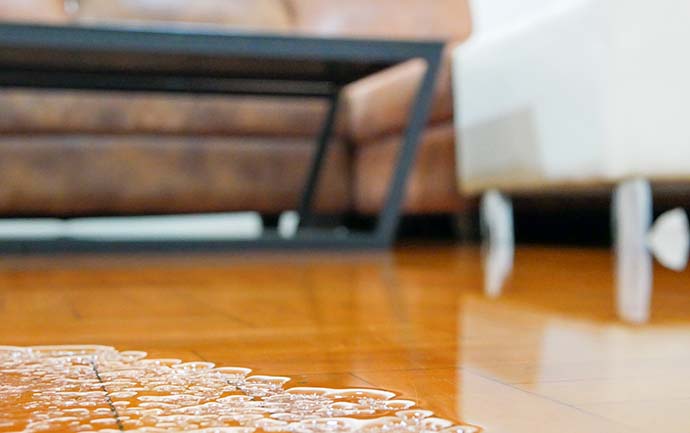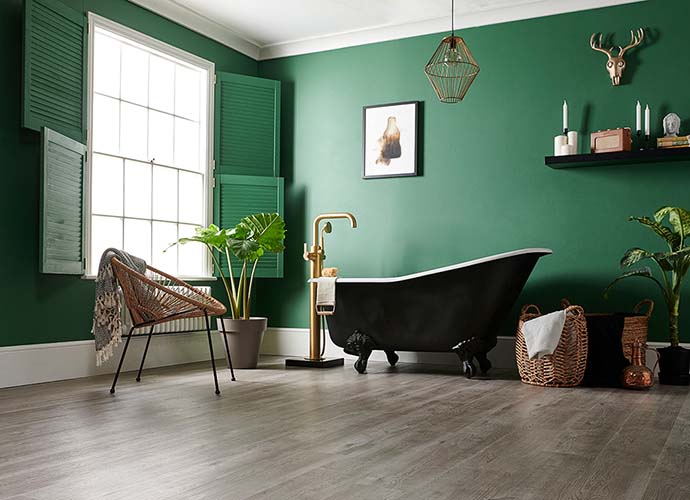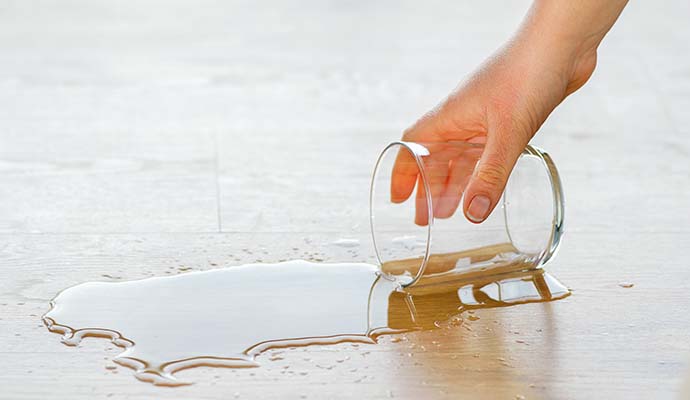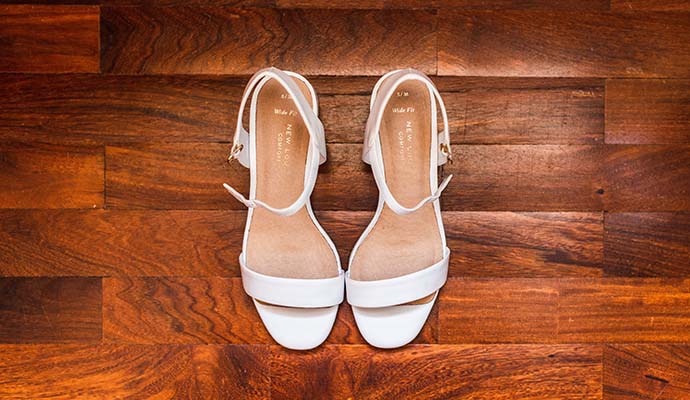How To Repair Warped Hardeood Floor
It's a problem that nobody wants to face. Suddenly your beautiful, elegant, smooth hardwood floor starts to look less than perfect. Perhaps the edges of the planks aren't lying flat anymore, maybe you've noticed some buckling along the length of the boards or even signs of splitting.
But don't panic just yet. Depending on the extent of the damage, warped hardwood floorboards might not mean that you face the cost and hassle of replacing your wooden flooring.
In this post, we'll take a look at the causes of warped wooden flooring together with the different types of warping and how to straighten warped wood. And because prevention is better than cure, we'll also give you some tips to stop wood warping in the first place.

What is Warping?
The term 'warping' describes distortion in the shape of the planks of your solid wood or engineered wood flooring. You may also see the term 'buckling' used to describe this type of damage, and there are other terms that describe specific types of distortion, including cupping and crowning.
Cupping is a type of damage to the boards where the edges are raised higher than the centre of the plank. Crowning describes the opposite, where the centre of the floorboard bows up higher than the edges. These both look bad but can usually be resolved without replacing the flooring.
Depending on how quickly you notice the warping, there may be a few options you can call on to help remedy the damage. But repairing serious warping will require assistance from your hardwood flooring specialists.
The first step is to work out why your flooring has buckled.
Why does wood warp?
Hardwood floor warping is most often caused by some kind of water or moisture damage. This is why proper preparation is so vital when it comes to choosing and installing your dream floor.
It's important to use the correct underlays and/or DPM (damp-proof-membrane), as well as exploring options such as solid or engineered floors to figure out what is best for the room you're having it installed in. Engineered wood flooring tends to be much more stable due to its cross-layered core, but there are many different variations and options out there. This is why we offer three free samples of wood flooring so that you can find the right flooring for your home – click here to request your free samples.
Cupping is often due to a moisture imbalance, where the bottom of the planks are exposed to more moisture than the top of the floor. This can occur if moisture is trapped under the flooring, if the air is particularly dry due to central heating or air conditioning, or a combination of both factors.
Humid air is another common cause of moisture damage to solid and engineered real wood flooring. Bathrooms and utility rooms tend to have a more humid atmosphere and so hardwood flooring is not recommended for these rooms. An alternative solution in these areas is to opt for a wood-effect water-resistant option such as our Stratex range.

Poor finishing on your real wood flooring can also lead to cupping or crowning, as the planks will swell if they get wet and then contract as the moisture dries.
More serious warping damage could be due to liquid being left standing on the surface of your wooden floorboards. It may also be caused by high levels of moisture, such as a pipe leak or undetected flooding nearby. This level of damage will need more serious attention than cupping or crowning.
But it's not just moisture that can cause your solid or engineered wood flooring to buckle. High temperatures, long term exposure to direct sunlight and excessively dry conditions can also cause the wood to shrink, split and warp.
How to straighten warped wood flooring
Depending on how bad the warping is, you may be able to resolve the situation yourself. Minor cupping due to a one-off spillage will need less drastic measures than serious warping and splitting caused by a long-term leaking pipe.
Before you repair hardwood floor buckling or cupping, your first step should be to work out where the water is coming from.
Where is the water coming from?

There's no point in repairing or replacing a hardwood floor if you don't deal with what caused the warping. It may simply be that a spillage was left on the floor or that excess water was left behind when the floor was mopped.
Damage that is near to a door or window could be due to poor installation, gaps around the frame or poor insulation. This might not become apparent until the Autumn or Winter months.
If you spot buckling near a radiator or a kitchen appliance, this could be the source of the water. It will probably be easier to spot a leak in a radiator than in a fridge/freezer, dishwasher or washing machine, as these leaks could be tucked away around the back of the appliance.
And if the damage is even more serious, you may need to check for a leaking pipe or flooding around your home. All of these can lead to your hardwood floor buckling.
After you've identified and solved the cause of your problem, you can then deal with the warping itself.

How to fix cupping, crowing and minor warping.
Cupping and crowning are less serious forms of warping and sometimes all you have to do is dry the floors out. This should allow the cupped floorboards to return to their original size and lie flat again.
But if there is a humidity imbalance in your room, you will need to resolve this to prevent further damage to your hardwood flooring.
In summer, you could run fans in the windows of the room to pull warm air inwards. If you have air conditioning, turn this off as it will only dry the air even more. If possible, you could also set up a dehumidifier in the room below the buckled hardwood floor. This will draw down the moisture and help to dry out the warped wooden floorboards.
How to fix warped hardwood floorboards
More seriously buckled planks will probably have to be removed and replaced, but you may not have to replace the entire floor.
It's often possible to take floorboards from less visible places, perhaps from areas that are hidden by furniture. These will give the closest possible match for the damaged planks and then you can buy new planks to replace those planks.
In some cases, you may need to sand down and refinish the floor again. This is often necessary where the floor's colour has been affected by sun exposure over time. Sanding, staining and sealing the floor is a big task, so it's better to try and avoid this if at all possible.
And in the most serious cases of warping, your only option will be to replace the damaged flooring with new boards.
How to prevent warping
Whether you have just installed a beautiful new hardwood floor or have already had to deal with warped wooden floorboards, you probably want to avoid it happening in the future. So here are some quick tips on preventing hardwood flooring from warping:
- Always clean up liquid spills as quickly as possible – click here for our tips on the best way to clean wood floors.
- Remove wet footwear before you walk over your hardwood floor and don't let wet coats, hats or umbrellas drip on your solid or engineered wooden flooring.
- Check doors and windows to make sure that the seals are watertight before wet weather sets in.
- Check your appliances regularly to make sure that any leaks are detected as quickly as possible.
- Control the humidity in rooms with real wood flooring by using fans rather than air conditioning to cool the space, and using dehumidifiers to remove excess moisture from the air.
- Make sure that your flooring has been properly finished to protect it against excess moisture.

Hopefully, these tips will help you to avoid warping and keep your wooden flooring looking good for years to come!
Subscribe to our Inspiration Journal for monthly style, trends, and news updates, or follow us on Instagram to see gorgeous interiors right on your feed.
How To Repair Warped Hardeood Floor
Source: https://woodpeckerflooring.co.uk/blog/what-causes-warped-wooden-flooring/
Posted by: hamiltonthimence1951.blogspot.com

0 Response to "How To Repair Warped Hardeood Floor"
Post a Comment